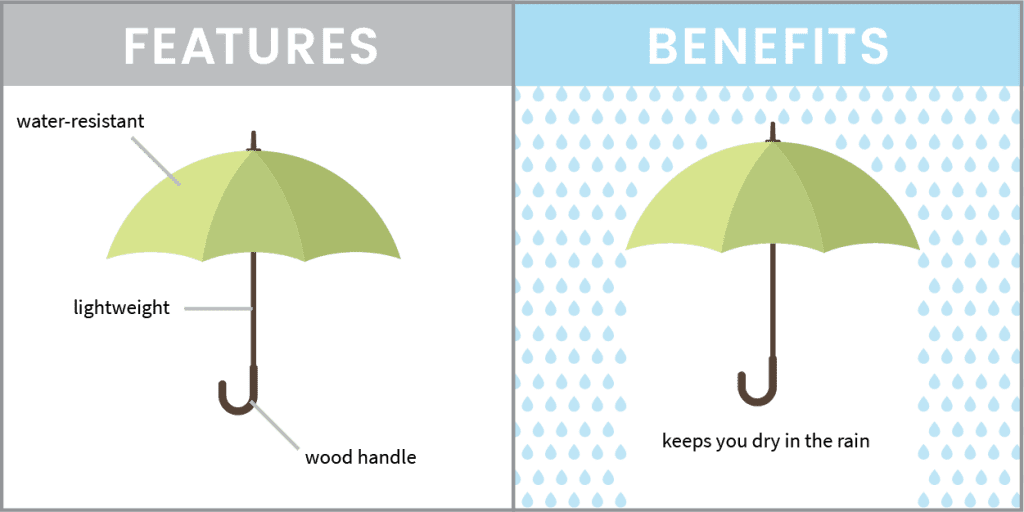Write for the Right Audience
When you’re writing marketing copy, what’s the first thing you do? Do you share all the great details about your organization or product/service and what it can do?
While your company’s background and qualifications are important in order to establish brand credibility, the most effective marketing communications typically focus on your audience—not you.
Before writing marketing copy, ask yourself who your target audience is for this marketing piece. (Keep in mind, there might be more than one.) Who is your typical customer? Who is most in need of your product/service?
Once you’ve identified who you want to reach, determine how your product/service can help them. For example:
- What problem does your product/service solve for them?
- How does your product/service benefit them?
- What can you offer to them that your competitors cannot? In other words, why is your product/service unique?
Put yourself in your customers’ shoes. Identify their needs and write to that. Do this succinctly and at the beginning of the copy, before people are prone to start skimming. Later, you can list the features that make those benefits possible. Which brings us to the next topic…

Focus on Benefits, Not Features
A feature is something your product/service is or has.
Features are facts about your products/services. They add credibility and substance to your benefit claim or pitch.
A benefit is how your product helps customers, such as enabling them to spend less time or money, improving their well-being, or solving a problem. It answers the question “Why should I buy the Skinny Blender?” or “How will the Skinny Blender help me?”
Benefits give customers a reason to buy because they explain how your product or service improves their lives.
| Feature: What It Is | Benefit: What It Does |
| The Skinny Blender has a patented filter that removes fat. | Lose weight without sacrificing flavor. |
| The Skinny Blender is made with state-of-the-art technology. | Spend less time making smoothies. |
| The Skinny Blender costs less to manufacture. | Spend less money. |
Typically, benefits are conveyed in attention-grabbing, action-oriented headlines. Features backing up each benefit are explained in body copy or bullets under each headline.
Try using a Mad Lib-style sentence to quickly convey how a feature provides your customers with a benefit:
Relieve Back Pain Safely & Quickly [benefit headline]
Product A is made from magical healing beans [feature], a revolutionary new discovery that immediately relieves pain [benefit].
The benefit statement makes you want to buy the product more than the feature statement, right? That’s because it tells you how it’s going to improve your life. Surely, you don’t want to get stuck in the rain without an umbrella!
How to Tell the Difference Between Features & Benefits
Let’s say you have a list of points that you want to convey about your product, but you aren’t sure which are features and which are benefits. Here’s a tried-and-true trick:
As Henneke Duistermaat of Enchanting Marketing explains, to convert features into benefits, simply answer the question “So what?”
Examples:
| Our tires last a long time. So what? You don’t need to replace them as often as other tires. So what? You’ll spend less money on tires. (Here’s your benefit.) |
| You can make our meals in 30 minutes or less. So what? You’ll spend less time cooking. So what? Dinner is on the table faster, making your hungry family happy. (Sounds like a benefit to me!) |
Read your copy and ask “So what?” for each sentence. Keep asking until you find the real benefits. Once you start doing this, you’ll notice the difference—and the impact of benefits-oriented marketing copy—whenever you see it.
Putting Words into Action
Let’s give it a try. First, consider these questions:
- Who is your primary target audience?
- What product or service do you offer them?
- How does it benefit them?
- What features does it have that back up your benefit claim?
Then, use the Mad Lib-like example above. Depending on what medium you’re writing for (digital, social, print, etc.), the format can vary, but it’s always important to back up each benefit with features. Remember, if you’re having trouble differentiating between benefits and features, ask “So what?” to get a list of powerful benefits.
Marketing copy has the power to attract people and compel them to learn more about your company. By offering easy-to-understand, benefits-centered information that helps people, you can enhance your brand credibility and establish customer loyalty, so you remain top-of-mind when they need your products or services. Follow these steps to crafting effective copy, and you’ll be bringing in customers in no time.
